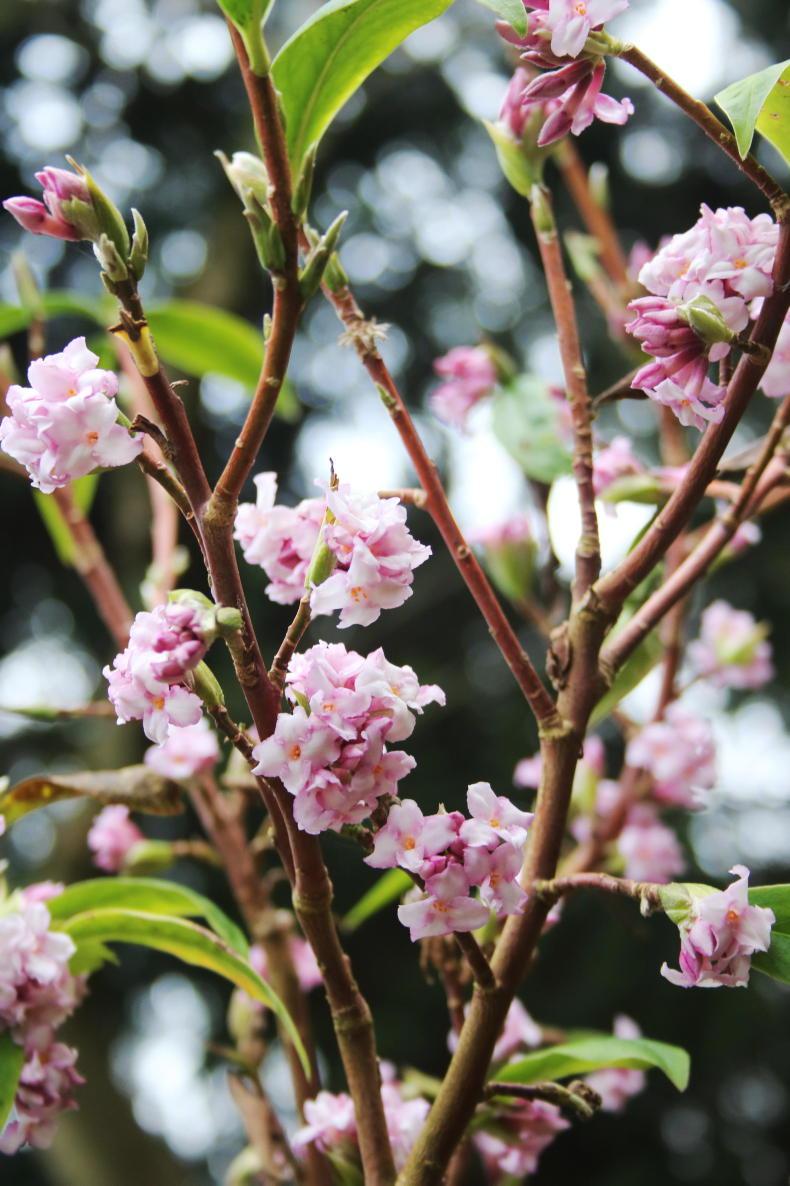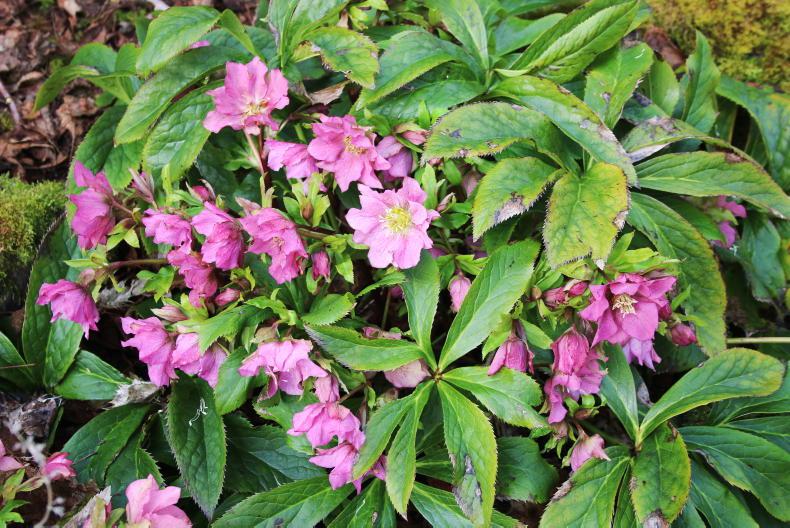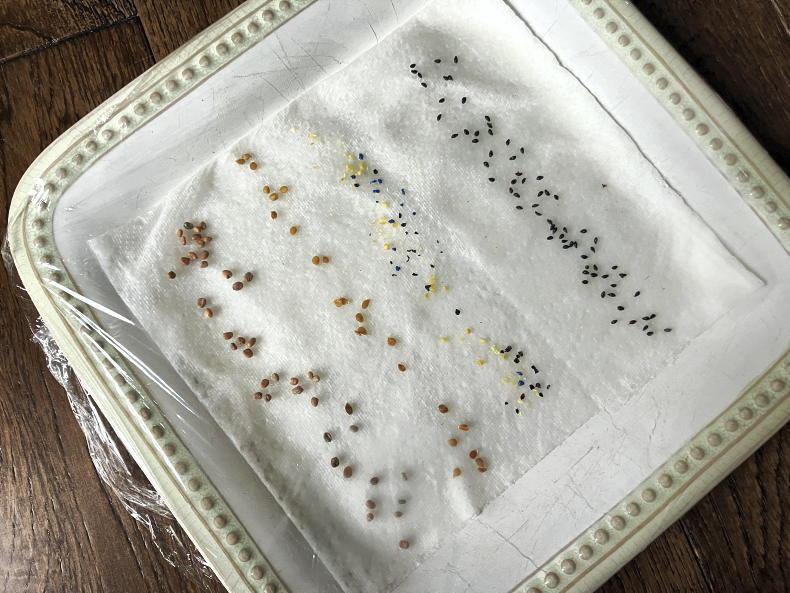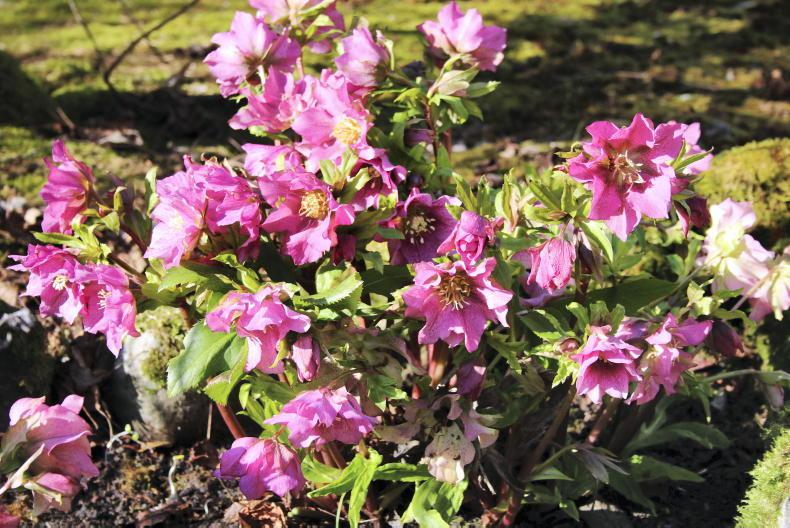However long you’ve been growing plants and tending your garden, the start of a new gardening year is always exciting. There’s no telling what fate, fashion and Mother Nature will throw at us this time around, and no two years are the same, but therein is the challenge that renews our energies and keeps us on our toes.
To ease myself into a new season of gardening and get some exercise to work off the festive excesses, one of the first jobs I do after Christmas is cut away the old leaves from hybrid hellebores before they open their flowers. Trimming them to ground level takes away the tatty, unattractive leaves and helps to show off the emerging flowers to best effect while making room for the fresh, new foliage to develop. Exposing the flowers will also help insects to pollinate and ensure good seed set for new plants that can be propagated in early summer from the resulting seeds.
Removing the old leaves helps with control of foliar diseases too, such as hellebore leaf spot. I also like to give the plants a mulch and usually spread a generous layer of homemade compost or farmyard manure around each one after trimming. As the hellebore blooms emerge, I can’t resist cutting a few to float on a bowl of water indoors so that their beauty can be enjoyed up close.
Scent
One of the things that helps to entice me back into the garden at this time is the magnificent scent of Daphne bholua ‘Jacqueline Postill’.

The winter blooms of Daphne bholua ‘Jacqueline Postill’ fill the air with their exquisite scent.
Plant it near an entrance door or a place you pass by regularly to enjoy the deliciously sweet clove scent from its pale pink flowers. The scent travels on the air and never fails to give an uplifting boost on a cold winter’s day. For years, I struggled to get this plant to successfully establish in our garden until I eventually planted one in a bright but very sheltered spot; tucked in a corner where it is protected from cold winds by high walls on two sides. Last year, it flowered from early January until March.
Over the next few weeks, if the weather is co-operative and ground conditions are dry enough, I will begin cutting back and clearing away the soggy, collapsed stems of perennials. These are snipped off at ground level, taking care not to damage any newly emerging shoots with the secateurs.

Helleborus x hybridus before cutting back the old leaves.
All the dead stems and debris is removed and put on the compost heap, as any plant remains left in borders can harbour slugs and snails which will demolish fresh young growth. Once a border has been cleared, we spread a layer of compost or farmyard manure to a depth of around 10cm over the soil surface between the plants and leave the earthworms to work it in.

Testing seeds for viability and germination.
On days when the weather isn’t so pleasant, you’ll find me putting my new year enthusiasm to good use tidying the shed or polytunnel. These quieter days are ideal for cleaning and sorting piles of pots, removing all accumulated clutter, cleaning and sharpening tools, weeding and clearing out dead or under-performing plants from the polytunnel to make space for sowing seeds and potting on the new season’s plants.
Taking this time to put some order and organisation in the work space will set things up for the growing season ahead and save time later when things get busier.
Composting
If you have a shredder, shred your Christmas tree and add it to the compost heap to rot down, or use it as a weed-suppressing mulch on the ground between trees and shrubs. Alternatively, the stripped-down branches make great pea stick plant supports.
•Top up gravel or bark paths, removing any weeds beforehand.
•Plant bare-root fruit trees and bushes.
•Turn the compost heap.
Timely Reminder:
cut back Virginia creeper
Climbing plants, such as Virginia creeper (Parthenocissus quinquefolia) and the related Boston ivy (Parthenocissus tricuspidata), can be very vigorous and need to be kept in check by cutting them back hard each year in winter or early spring. This is especially important if they are growing up a house where pruning should aim to cut stems away from windows and doors and prevent them from encroaching into gutters or under roof tiles. It’s easy to see the stems now. Stems that have come detached will not reattach to a surface, so they should be trimmed away.
Out and About
Saturday, 27 January: Snowdrop Gala 2024 – celebrating the snowdrop and other spring treasures. Venue: Ballykealy Manor Hotel, Ballon and Altamont Gardens, Co Carlow. Speakers: Steve Edney, UK, and Michael Dreisvogt, Germany. Advance booking essential. For more information and bookings email: hesterforde@gmail.com.
Out now: the new edition of The Irish Garden is in shops to buy.
Mary Keenan and Ross Doyle run Gash Gardens, Co Laois open to the public. gashgardens.ie
Read more
Mary Keenan's Garden Diary: Terrace time
Mary Keenan's Garden Diary: mind the gaps
However long you’ve been growing plants and tending your garden, the start of a new gardening year is always exciting. There’s no telling what fate, fashion and Mother Nature will throw at us this time around, and no two years are the same, but therein is the challenge that renews our energies and keeps us on our toes.
To ease myself into a new season of gardening and get some exercise to work off the festive excesses, one of the first jobs I do after Christmas is cut away the old leaves from hybrid hellebores before they open their flowers. Trimming them to ground level takes away the tatty, unattractive leaves and helps to show off the emerging flowers to best effect while making room for the fresh, new foliage to develop. Exposing the flowers will also help insects to pollinate and ensure good seed set for new plants that can be propagated in early summer from the resulting seeds.
Removing the old leaves helps with control of foliar diseases too, such as hellebore leaf spot. I also like to give the plants a mulch and usually spread a generous layer of homemade compost or farmyard manure around each one after trimming. As the hellebore blooms emerge, I can’t resist cutting a few to float on a bowl of water indoors so that their beauty can be enjoyed up close.
Scent
One of the things that helps to entice me back into the garden at this time is the magnificent scent of Daphne bholua ‘Jacqueline Postill’.

The winter blooms of Daphne bholua ‘Jacqueline Postill’ fill the air with their exquisite scent.
Plant it near an entrance door or a place you pass by regularly to enjoy the deliciously sweet clove scent from its pale pink flowers. The scent travels on the air and never fails to give an uplifting boost on a cold winter’s day. For years, I struggled to get this plant to successfully establish in our garden until I eventually planted one in a bright but very sheltered spot; tucked in a corner where it is protected from cold winds by high walls on two sides. Last year, it flowered from early January until March.
Over the next few weeks, if the weather is co-operative and ground conditions are dry enough, I will begin cutting back and clearing away the soggy, collapsed stems of perennials. These are snipped off at ground level, taking care not to damage any newly emerging shoots with the secateurs.

Helleborus x hybridus before cutting back the old leaves.
All the dead stems and debris is removed and put on the compost heap, as any plant remains left in borders can harbour slugs and snails which will demolish fresh young growth. Once a border has been cleared, we spread a layer of compost or farmyard manure to a depth of around 10cm over the soil surface between the plants and leave the earthworms to work it in.

Testing seeds for viability and germination.
On days when the weather isn’t so pleasant, you’ll find me putting my new year enthusiasm to good use tidying the shed or polytunnel. These quieter days are ideal for cleaning and sorting piles of pots, removing all accumulated clutter, cleaning and sharpening tools, weeding and clearing out dead or under-performing plants from the polytunnel to make space for sowing seeds and potting on the new season’s plants.
Taking this time to put some order and organisation in the work space will set things up for the growing season ahead and save time later when things get busier.
Composting
If you have a shredder, shred your Christmas tree and add it to the compost heap to rot down, or use it as a weed-suppressing mulch on the ground between trees and shrubs. Alternatively, the stripped-down branches make great pea stick plant supports.
•Top up gravel or bark paths, removing any weeds beforehand.
•Plant bare-root fruit trees and bushes.
•Turn the compost heap.
Timely Reminder:
cut back Virginia creeper
Climbing plants, such as Virginia creeper (Parthenocissus quinquefolia) and the related Boston ivy (Parthenocissus tricuspidata), can be very vigorous and need to be kept in check by cutting them back hard each year in winter or early spring. This is especially important if they are growing up a house where pruning should aim to cut stems away from windows and doors and prevent them from encroaching into gutters or under roof tiles. It’s easy to see the stems now. Stems that have come detached will not reattach to a surface, so they should be trimmed away.
Out and About
Saturday, 27 January: Snowdrop Gala 2024 – celebrating the snowdrop and other spring treasures. Venue: Ballykealy Manor Hotel, Ballon and Altamont Gardens, Co Carlow. Speakers: Steve Edney, UK, and Michael Dreisvogt, Germany. Advance booking essential. For more information and bookings email: hesterforde@gmail.com.
Out now: the new edition of The Irish Garden is in shops to buy.
Mary Keenan and Ross Doyle run Gash Gardens, Co Laois open to the public. gashgardens.ie
Read more
Mary Keenan's Garden Diary: Terrace time
Mary Keenan's Garden Diary: mind the gaps










 This is a subscriber-only article
This is a subscriber-only article










SHARING OPTIONS: